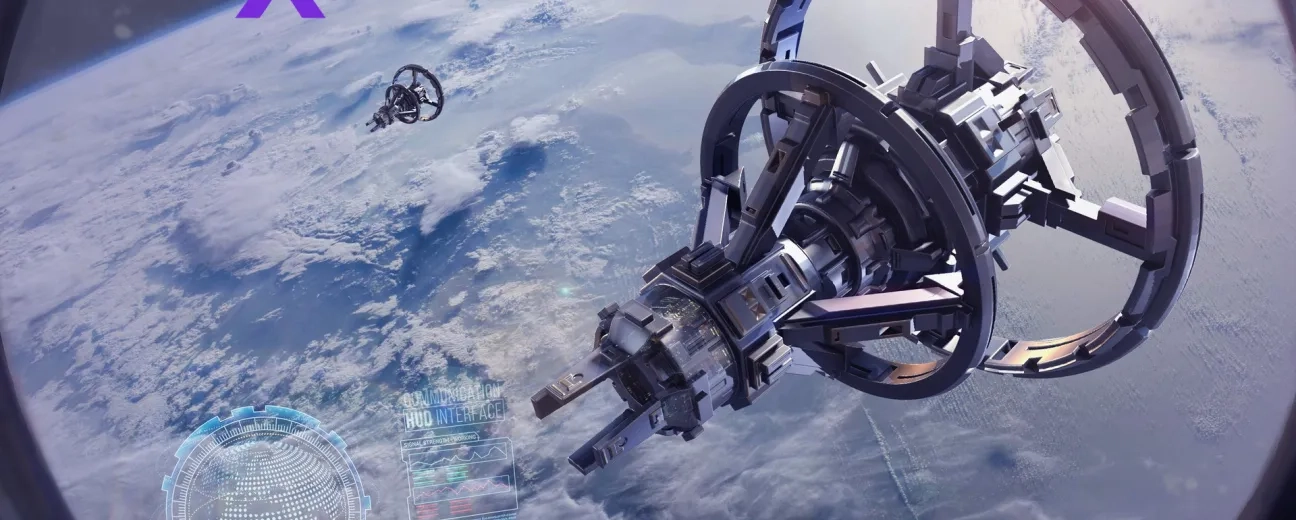Designing the Future: Futuristic UI and Communication Systems

The Interface of Tomorrow Is Already Here
Picture this: a user logs into a platform and is instantly greeted by a fully adaptive, AI-personalized dashboard that feels more like a conversation than a screen. Welcome to the era of futuristic UI design and communication HUD interfaces - a space where design speaks, adapts, and evolves in real time.
In an age when digital presence means everything, the way we communicate through interfaces has become the new frontier. Businesses, creators, and users alike are demanding systems that are not only beautiful but intuitive, immersive, and intelligent. The question is no longer if we're moving toward futuristic interfaces - it's how fast and how deeply they'll transform the digital landscape.
Why Futuristic UI Design Matters Now
Gone are the days of flat, static UIs. The digital platforms of 2025 are being shaped by trends like spatial design, interactive 3D objects, and motion-driven storytelling. According to UX Studio, immersive and empathetic experiences are becoming the gold standard, blending functionality with emotional intelligence.
Users now expect communication systems that feel alive - interfaces that react, respond, and even predict. This is where futuristic UI design steps in, merging form and function through AI-powered, generative layouts and interfaces that learn and grow with users.
Think about your favorite digital experience today. Now imagine it infused with real-time feedback, gesture controls, and spatial awareness. That’s where we’re headed.
Communication HUD Interfaces: The New Digital Language
Heads-Up Display (HUD) interfaces, once reserved for fighter jets and sci-fi films, are now finding their place in mainstream digital platforms. These HUD-style systems offer continuous, non-intrusive access to real-time data, enhancing both usability and engagement.
As noted by Caltech Bootcamps, advanced microinteractions and real-time 3D manipulation are key to these evolutions. Communication HUD interfaces create a seamless layer between the user and the system, reducing friction and amplifying clarity.
- Real-time data overlays
- Gesture-based controls
- Voice-activated navigation
- Contextual microinteractions
These elements aren’t just flashy - they’re functional. They reduce cognitive load and allow users to act faster and smarter within digital environments.
Imagine checking your project dashboard, and instead of clicking through tabs, you summon reports with a hand gesture or query data with a voice command. That’s not fiction—it’s fast becoming fact.
AI, Generative Design, and Ethical Interfaces
Artificial intelligence is the silent engine behind many futuristic UIs. From layout optimization to contextual communication, AI is enabling platforms to deliver personalized, predictive experiences that adapt in real time.
Behance highlights how AI-generated motion posters and adaptive branding are transforming digital storytelling. These systems don’t just present content - they evolve with the user’s behavior, preferences, and needs.
But with great power comes great responsibility. Ethical design is becoming a non-negotiable. Transparency, accessibility, and user consent must be embedded into every layer of these advanced interfaces. Design must empower, not overwhelm.
Can a UI be too intelligent? Only if it forgets the human it's meant to serve.
Minimalism Meets Maximal Impact
Interestingly, the future of UI isn’t cluttered with complexity - it’s refined by intentional simplicity. According to Storify Agency, minimalist design continues to dominate, but with smarter whitespace, bold typography, and functional animations that serve a purpose beyond aesthetics.
Key elements include:
- Expanded white space for focus and clarity
- Typography-driven layouts that guide attention
- Microinteractions that educate and delight
- Touchless gestures and dark mode for accessibility
Minimalism in futuristic UI isn’t about removing features - it’s about elevating the essential and removing the noise. The result? Interfaces that feel calm, purposeful, and deeply human.
In a world full of digital noise, silence - through elegant design - can be your loudest statement.
Designing for the Future: Where to Start?
Businesses looking to stay ahead need to rethink their platforms from the ground up. Integrating futuristic UI and communication systems isn’t just a design exercise - it’s a strategic imperative. Whether you're building a digital product or revamping your website, investing in forward-thinking design ensures you stay relevant, resonant, and responsive.
At SoftXPro, we help clients bring these interfaces to life - from custom website design to immersive platform development. Our portfolio showcases how we’ve transformed digital experiences using these very principles.
If you’re ready to explore what futuristic UI could mean for your platform, start by auditing your current user flows. Where is communication breaking down? Where could microinteractions improve clarity? Where can AI lighten the cognitive load?
The future won’t wait - and neither will your users.
Conclusion: From Interface to Interaction
Futuristic UI design and communication HUD interfaces aren’t about looking cool - they’re about making digital interactions more human, more efficient, and more emotionally intelligent. As we move into 2025, these systems will become the new expectation, not the exception.
Now is the time to reimagine your digital presence. Build interfaces that listen, respond, and evolve - because in the future, every pixel will be part of the conversation.
